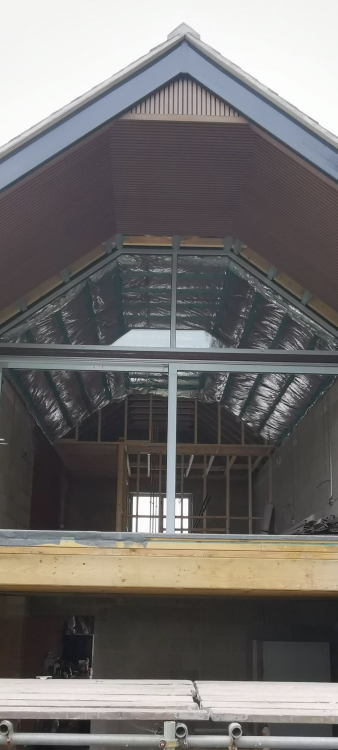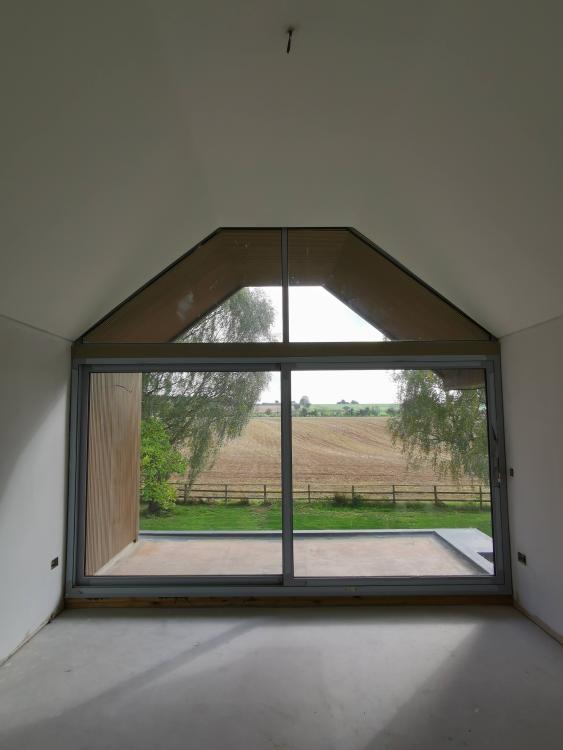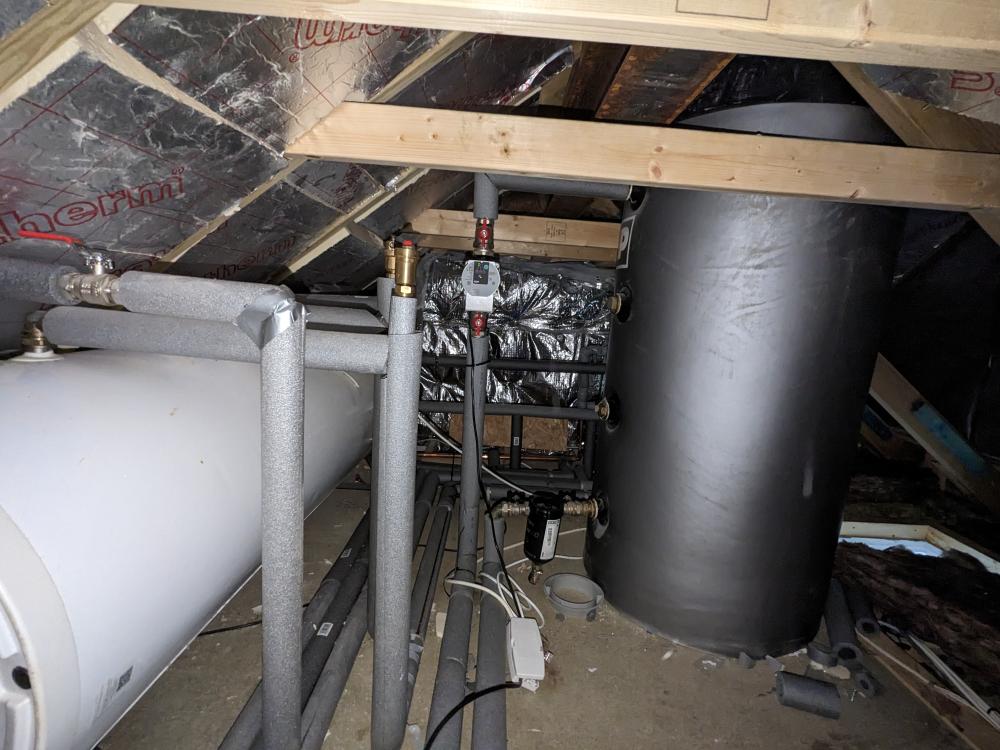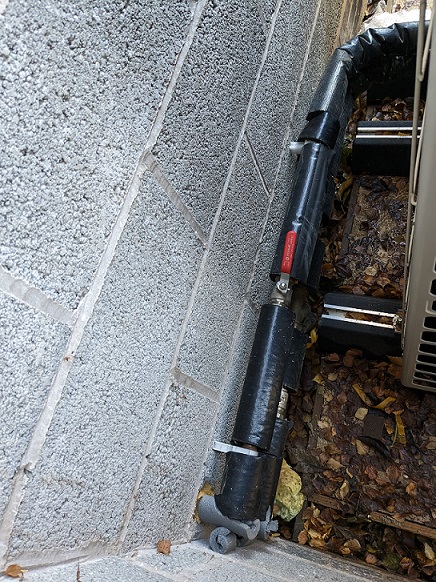
Rupe30
Members-
Posts
19 -
Joined
-
Last visited
Personal Information
-
Location
Stratford-upon-Avon
Recent Profile Visitors
The recent visitors block is disabled and is not being shown to other users.
Rupe30's Achievements

Member (3/5)
0
Reputation
-
Just wanted to jump in this post as I'm having the same problem and I have the exact same shower traps. I have no external soil pipe, but a durgo valve fitted inside, although it's been fitted in an inaccessible place. Whenever I flush a toilet I can see the water deplete from the traps and they hold such little water it's dry after a few flushes. Can a durgo valve be fitted incorrectly? Does it matter where the durgo valve is placed on a system? We have 3 shower traps, 3 toilets, 3 sinks & a bath running through this pipework. Thanks in advance!
-
Thanks for your response @ReedRichards The only thing I need to figure out now is whether I can reduce my 180l buffer vessel (and whether the savings would be worth it Vs the cost to change). If anyone could chime in on that subject it'd be appreciated.
-
Sorry to go radio silent, ASHP problems melt away in summer! After the last post I set all thermostats to 30 degrees to stop them clicking on and off and adjusted the flow rates to all the zones on both manifolds till the rooms held temperature. It was challenging to balance the system, downstairs all zones are on minimum flow and manifold pump is on minimum setting and the lounge still got too hot so I had to use the thermostat for that, but I used it as a timer rather than temp target to avoid it clicking on and off repeatedly. Upstairs 2 rooms require max flow with the manifold pump on max setting to keep temperature which is what is restricting the whole system as the rest of the house is pretty much on minimum flow rate. Th So In summary yes I can run the whole house on, but I need to turn two small bedrooms off and the lounge sometimes . Running the AI mode at -2 so I think all in all it's working well considering house is a comfortable 21 degrees which much warmer than we had it previously. One issue of running The system in this way is that I can only adjust the temperature of the house using the LG controller using the + or - on the AI mode and it takes a long time to take effect. Which means I can't have the house cooler at night. I'd like to track my COP to as i figure that's a good way to track the efficiency. I can't see any heat output data on the LG controller so am I going to have to fit my own heat meter and electric meter to determine COP or is there an easier way? Figured out the issue with the hot water, cylinder was installed back to front, so the hot feed was attached to the cold (which has a dip pipe to the bottom of the tank) and the cold feed was entering into the top of the tank. Much better since we've re-plumbed.
-
I was going to ask if that was a better way of doing it. Enough to cause a problem or worth a go? Lukewarm blended water is absolutely what we get. Even set to 55 degrees it doesn't feel close to that. I'll measure up tomorrow I think we do have that height. Is it worth having a smaller buffer than losing it all together?
-
Ok, as Im unsure about how to go about setting temperature based on slab temp, would a workaround be to set all my thermostats to 30c then use weather comp to keep the house at the right temperature. That will stop the zones turning off and on & keep the buffer tank at a constant temperature. I'd probably need to turn my mixers down to 2 on the downstairs manifold. I'm not sure there's enough height for a DHW cylinder where the buffer tank is, as much as I'd like to put the buffer in the bin! On the subject of DHW, are any horizontal cylinders any good? Or do I need to relocate to get a vertical?
-
Last night it was -1 outside, inlet outlet was showing as 35 37. The house kept the temperature apart from the landing which dropped 0.5 degrees. Downstairs heating hasn't come on much so I'll turn the mixer down on that manifold. but looks like a great base to start from. I am still using air thermostats, should I be using another way? It's latest building regs so there's 150mm celotex before the superquilt. I have a thermal camera and roof looks fine. There are still cold spots on the landing ceiling though so I'm hoping once I rectify that, the landing will hold temperature. It's not timber-framed. Genuinely surprised the house kept temperature last night at the lower flow temps, so the insulation has made a big difference. I recently measured flow and return temps on the manifolds (we don't have any radiators) and increased the flow rates so that return was 7 degrees less than input. Most of them were 10-15 degrees cooler on the return (set to manufacturers spec). I'm sure I read on another post there is an actuator that automatically adjusts to keep flow and return within 7 degrees, anyone know of the product? Water entering manifolds is generally about 5 degrees cooler than LWT.
-
Thanks @markocosic really useful info. The attic space pictured is really poorly insulated. The rest is done properly with superquilt over the top, Shame they didn't just carry this insulation on into the attic but at the time it was just going to be empty attic space. The glass gable has a pretty hefty heat loss though which is a little tricky to get around. I used to run the heating 24/7, tried a few weather compensation modes, but our landing and master bedroom (pictured) would lose temperature. I have recently had cavity wall insulation pumped in the landing wall and external wall insulation put on the majority of the house. I've also insulated the ceiling of the master bedroom which links to the poorly insulated attic. So I'm going to try again with the weather comp mode with the settings mentioned previously. I've set the thermostats to stay at one temperature so we'll see in the morning if the landing and master have been able to hold temp. If not I'll increase the weather comp temperatures and turn the mixer down on downstairs' manifold and go from there. The system was designed by the company that did our thermodynamic report, which was organised by the company that installed our heatpump (who are no longer in business). It was designed to operate at 50 degrees flow temp which I now realise is a poor design.
-
Based on running it 24/7 is it best I keep the same temp in the house all the time? As i'm probably going to run into the same problems trying to increase temperature. I've set outdoor temp to -4 18 and LWT to 20 42 that should run 23degrees at 15 external yes?
-
Yes it's when downstairs comes on that the flow rate drops and doesn't recover. The odd thing is downstairs doesn't take long to heat up so I'm surprised it's cooling the buffer tank down so much. Today downstairs was up to temp within an hour, my thermostats do keep heating on for a while even when target temp has been reached, so I've turned the thermostats off manually to allow upstairs to get to 50 which will allow it to heat. If I set the whole system to 35 upstairs will lose too much temperature, where as downstairs would probably be fine at that. Would turning the mixer down on the downstairs manifold take any pressure off the buffer tank? I basically can't heat upstairs and downstairs at the same time. Perhaps I should heat downstairs 24/7 on low flow temp then switch downstairs off and just in heat upstairs at a higher flow temp during the cheap rate hours. Although in I don't think I can't schedule flow temp changes on my LG controller. couple pictures below to see inputs and outputs into buffer tank.
-
Little update, my buffer tank is actually 180 litres.. (apologies!) The main issue I have is when I have a large proportion of the house calling for heat (approx 200sq/m), the heat pump is unable to reach the 50degree target I have it set to. It usually gets to 41 degrees max which by the time it hits the manifolds is 38. I currently heat between 4am-7am and 1pm-4pm as I've joined the octopus cosy tariff, which I realise isn't ideal for an ashp but the house seems to be coping well if outdoor temps are above 5 degrees or so. I then have two zones on from 7pm-10pm in areas that have higher heat loss. When I just have the 2 zones on the target flow rate is achieved. And the rooms heat up 1.5 degrees in that 3 hour period. Looking at my electricity usage, my heat pump rarely draws more than 6kw for heating, it spikes to 10-12kw for DHW. Why is it not drawing more power to get the flow rate up to 50?
-
With the mixer valves set to 4 that could well be dropping the flow down to a max of 40. Am I better off setting the heatpump to 40 and leaving the mixers at 6? I have found sitting on the floors uncomfortable upstairs so interesting you say that.
-
We're using the ThermoDEK -18 system upstairs (https://www.continal.co.uk/system/thermodek) which is lay over chipboard flooring. There's acoustic insulation in the ceiling space below. I spoke with the UFH providers who had designed the system, they informed me the mixing valves should be set to 4 with my ASHP flow temp set to 50 degrees. I've also set the correct flow rates on the manifolds, everything was just open to the max (3-4ltr) when most our flow rates needed to be between 1-2ltr. I'm also running AI mode settings 29 50 as mentioned in the Therma V thread (I had tried that before when house was struggling to keep temp but it didn't help). And finally I've re-done the lagging outside as that was useless. Since then its been running well. I know the weather has warmed up a little, lately its been down to 3 degrees at night, 8-9 in the day and our ASHP has consumed an average of 23kwh each day over the last 3 days. The prior 4 days to that it averaged 95kwh per day although it was down to -5 over night and barely above 0 during the day. So will see when we get another cold snap if the house is able to keep temperature with these latest adjustments. I'll try and get in the loft tomorrow to take a picture of the water tank setup and get your thoughts. Thanks again!
-
Mixing valve is on max. The issue is I can't get enough heat to the manifolds. I'm sure it is, we've got a horizontal 210litre water tank (which can't even fill a hot bath but I won't get started on that!) Which I would say is smaller than our buffer tank. Our system volume is 230litres over the two floors in the underfloor system so perhaps a small buffer necessary? I reset the heatpump today and with a 6/9 zones on upstairs and 1/5 downstairs couldn't get a flow temp above 40 degrees, the manifolds were getting the correct temperature though (just below 40) so I haven't needed to turn the stats on and off at all. I turned off the zones downstairs and flow increased to 47degrees. Is it possible the buffer tank is too much for the ashp to power? I find it hard to believe a 16kw heat pump could be underpowered for our property. Looking at our smart meter the ashp has been running at 4kw for most of today. Thanks for everyone's input.
-
How do I get a higher temp to the UFH manifolds though? Will the mixing valves not reduce the water leaving temperature i set as it's mixing with the return water?
-
Ok so first thing to do is remove those mixer valves then, sounds like I'm paying to generate heat only to cool it before it gets to our UFH. Most the house could run cooler temps than 55, it's only a couple of rooms that are losing heat in this cold weather. Do you think the 300ltr buffer is excessive?






